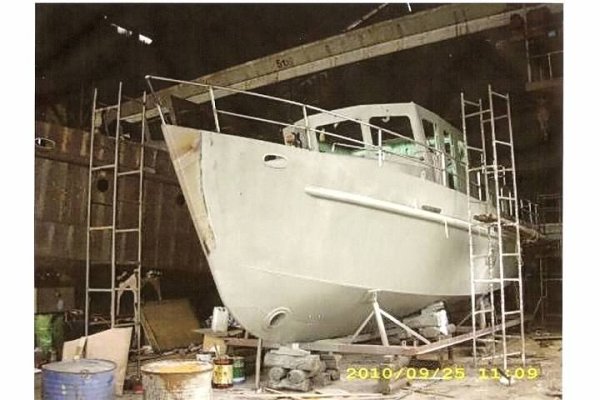What I have against them is most are high maintenance.
My old boat had a bow thruster, the current one has bow and stern. Neither have required much maintenance other than zinc changes. Some thrusters ask for every-other-year fluid changes. Mine have basically been maintenance free until seal replacement time...ABT says every 6 years and it only takes a few hours when the boat is out of the water. I've spent way less time and money on thruster maintenance than I have on main engines, generators, stabilizers, black water systems, hot water systems, diesel furnaces, air conditioning, windlass, or any number of other systems aboard.
I've never seen a thruster on a sailboat and they're single screw. How do they dock?
The Beneteau 46 sailboat in front of me has a bow thruster and I've seen a lot of sailboats in that size range with bow thrusters. Stern thrusters, not so much.
There's often a lot of talk about how commercial boats get by without thrusters. I've seen the Alaskan fishing fleet maneuvering, and while it's usually impressive, it requires a lot of power from the helmsperson and agile crew jumping to the dock with lines. And look at the boats! They're not polished like a yacht. I've watched commercial fish boats shatter pilings and put V-shaped indentations in docks when they pinned the bow in a slip, then drove forward to get the stern over. Not something I want to try with my boat.
Thrusters make maneuvering so much easier, safer, less stressful, and more predictable, especially for the average cruiser who's likely to be older than a fishing boat crew and with fewer deckhands than a commercial boat.
I've only had electric thrusters on my own boats and they work fine. Never timed out or had a failure. I've worked on plenty of boats with hydraulic thrusters and they're a joy...variable speed, often higher output, can run continuously. Hydraulics are more work to install if you don't already have hydraulics on the boat...you need a sufficiently large PTO, hydraulic cooling, a reservoir, etc. Failure modes between electric and hydraulic are different, but both are well understood and good design, installation, and regular visual inspections can mitigate most failures.



